Discovering Brescia
Are you ready to discover another art city of our beautiful Italy? Then follow us on this virtual itinerary through the streets of Brescia, one of the largest cities in Lombardy, as well as one of the richest in history, starting with its glorious Roman origins.
Brixia in 27 BC received the title of Colonia Civica Augusta from Augustus, and even today its Roman antiquities constitute the largest archaeological site in northern Italy. In recent months, work has materialized on the redevelopment of the archaeological park around the Capitolium, which includes the Capitoline Temple, the Republican Sanctuary (fourth cell), the Roman Theater, and some remains of the forum that were buried by a landslide of the Cidneo hill in the Middle Ages and brought to light only in the 19th century.
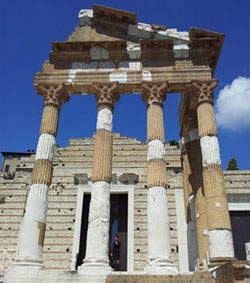 |
| The Capitolium of Brescia |
It was here that the Winged Victory was found, a bronze sculpture from the 1st century AD now on display in the nearby Santa Giulia Museum, a museum complex rich in evidence that occupies the spaces of the ancient monastery dedicated to St. Savior, built on the site of the Roman Domus, important traces of which can still be seen (the Domus dellOrtaglia) next to the Roman Viridarium. In the monastery, founded in 753 by Queen Ansa, wife of Desiderius (last king of the Lombards), Desiderata, the daughter of Desiderius, took refuge and died after her husband Charlemagne repudiated her. The complex includes the church of San Salvatore, the Nuns’ Choir and the 12th-century church of Santa Maria in Solario, inside which is housed the precious treasure of Santa Giulia (a visit to this museum is not to be missed).
Thanks to this historical wealth, which from the Roman era continues into the Lombard one, Brescia in 2011 became part of the UNESCO site The Lombards in Italy. Places of Power, which includes Santa Giulia and the archaeological area of the Capitolium, now finally accessible and visitable in all its fullness.
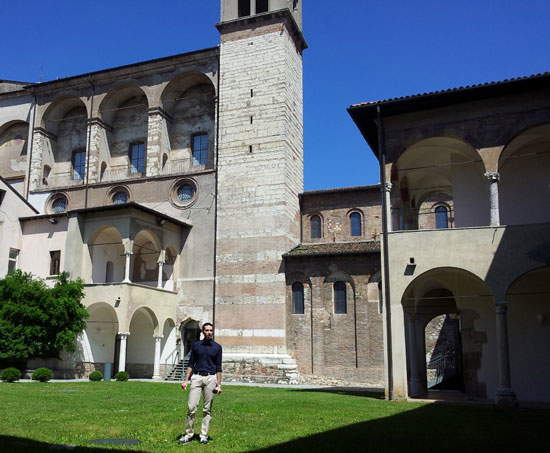 |
| The Museum of Santa Giulia... with Fabrizio! |
The city also had a new development in the Middle Ages, structuring itself urbanistically as it appears today: on the Cidneo hill there is the castle controlling the territory, while the lower city developed around the market square (today’s Paul VI Square). Overlooking it are the old cathedral (the old cathedral known as the Rotonda), the new cathedral and the Broletto, the seat of the civic magistracies in the communal age, a site where there was the mercatum broli, the vegetable market.
The Renaissance later identified a new space as the focal point of the city, creating a new square, where the palaces of power were built in the era when Brescia was part of the Republic of Venice. The best known of these is the Palazzo della Loggia, which gives its name to the square, to which many architects of the era contributed, at the time the seat of the aristocratic council, and today the seat of the City Council. The typical hull roof was added only in 1914 following a fire that destroyed lattico designed by Luigi Vanvitelli.
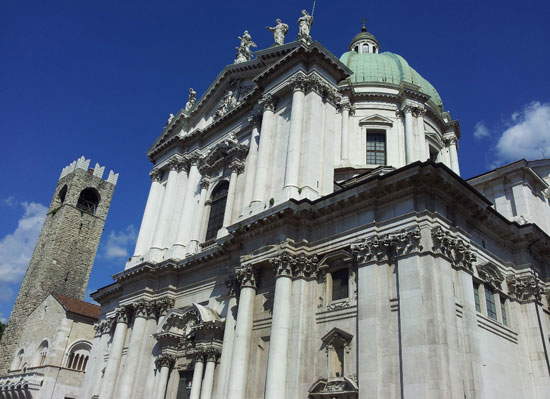 |
| The Cathedral of Brescia |
Opposite the Loggia, on the opposite side of the square is the clock tower on which two figures that have become the emblems of the city strike the hours; they are the fools of the hours (Tone and Batista, i macc de le ure).
Venetian rule over the city lasted for four centuries, which was followed by the Risorgimento period in which Brescia distinguished itself for its tenacity and heroic resistance toward the Austrian army in the ten days that earned it the epithet Lioness of Italy by which it is still known today.
The fourth Brescian square linked to a historical period (after that of the Forum - Roman, that of the Market - Medieval and that of the Loggia - Renaissance) is Piazza della Vittoria, the result of urban redevelopment work during the Fascist era. In fact, it reflects the neoclassical and monumental style of Marcello Piacentini. Today, the square is the starting and finishing point of one of the most important events for the city: the Mille miglia, which takes place precisely in May and in which vintage cars belonging to historic races between 1927 and 1957 participate. Three days of non-stop itinerary through the streets of Italy round trip Brescia-Rome.
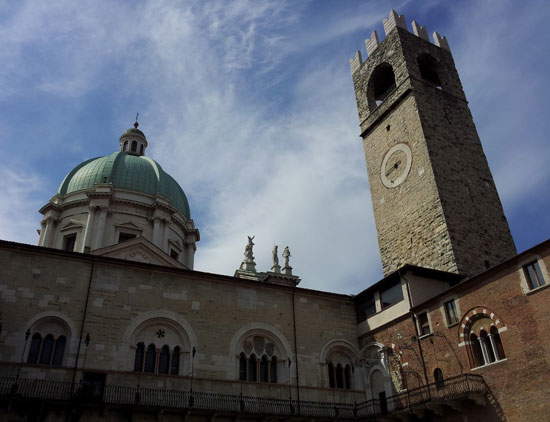 |
| The Broletto |
The other events and events of a cultural nature held in the city are related to the world of music, often in collaboration with the Teatro Grande, where the Brescia and Bergamo piano festival is held. There is then the opera festival in September with events scattered around the city. An additional curiosity can be discovered underground: thanks to the Brescia Underground association, it is possible to take routes along the ancient underground rivers of the city, rediscovering places and presences hidden on the surface. Also for this good trip !!!
Watch the episode and try to answer the questions in the comments!
Question 1: What does lAdelchi have to do with Brescia?
Question 2: Guelph or Ghibelline Brescia?
Question 3: What is the Mustassù delle Cossere?
Trivia of the episode: The Victory Tower was the first skyscraper built in Italy.
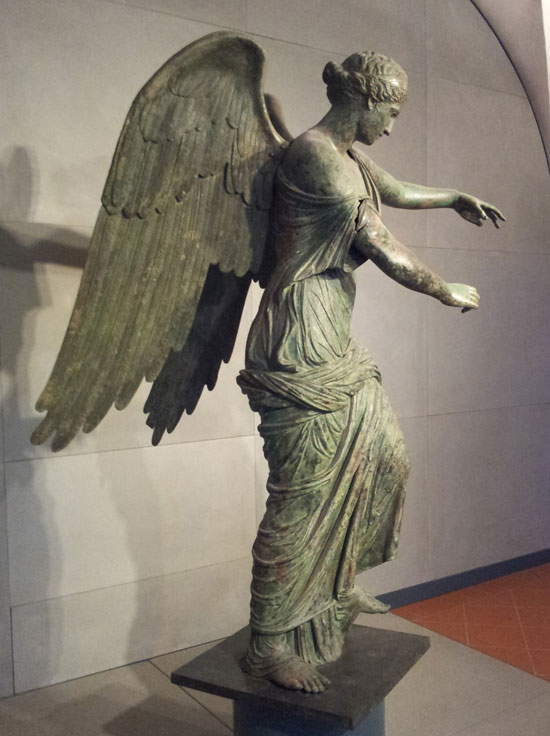 |
| The statue of Winged Victory |
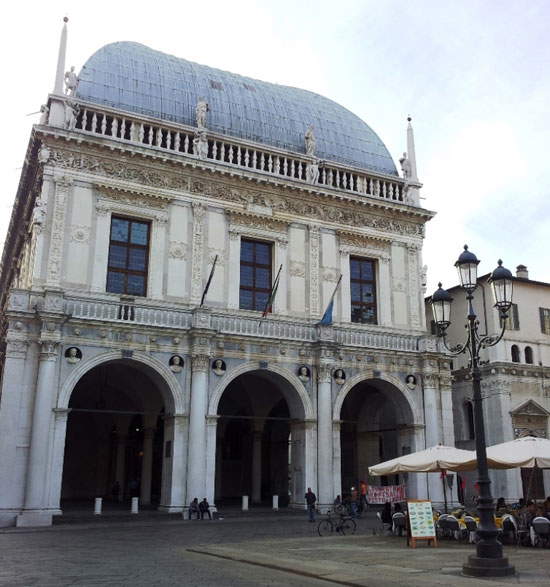 |
| The Palace of the Loggia |
 |
| The Castle |
Warning: the translation into English of the original Italian article was created using automatic tools. We undertake to review all articles, but we do not guarantee the total absence of inaccuracies in the translation due to the program. You can find the original by clicking on the ITA button. If you find any mistake,please contact us.


























